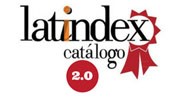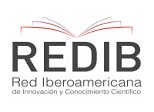Comprehension Difficulties and Methods of Teaching Linear Inequalities at the University Level
DOI:
https://doi.org/10.69890/hallazgos21.v6i2.516Keywords:
Education; teaching methods; learning; understanding; linear inequalities.Abstract
The present study was developed with the objective of knowing the limitations that students have in the thematic context of first and second grade inequalities in mathematics, considering the weaknesses that many of the teaching methods have around the freedoms to develop a flexible scheme with which university students in general feel supported for the consolidation of knowledge in the field. In this sense, an investigation was carried out within the quantitative paradigm and a descriptive scope, with a diagnosis made through a field design with the application of a survey. The dichotomous questionnaire questioned the sample about the teaching of mathematics in their professional career. In this sense, the result obtained was that most of the respondents showed that they do not understand the exercises, the set of expressions and the resolutions of the problems proposed by the current method used by the teachers; Furthermore, in overtime they do not perform any type of academic reinforcement tasks, that is, they do not do internships and do not comply with their own and personal cognitive activities for this purpose. It is concluded that in the context of mathematics teaching, the clear presentation of the concepts and the revision that the students make precisely from the first moment is fundamental.
References
Agual, P. (2017). Proyecto Socioeducativo presentado como requisito parcial para optar por el Grado de Licenciatura en Ciencias de la Educación, mención Matemática y Física. (tesis de pregrado). Universidad Central de Ecuador, Quito, Ecuador.
Alvarenga, K. (2006). Inecuaciones: un análisis de las construcciones mentales de estudiantes universitarios. (tesis doctoral no publicada). Instituto Politécnico Nacional, México. https://www.repositoriodigital.ipn.mx/bitstream/123456789/11391/1/barbosa.pdf
Barbosa, K. (2003). La Enseñanza de las Inecuaciones desde el punto de vista de la teoría APOE. RELIME. Revista Latinoamericana de Investigación en Matemática Educativa, 6(3), 47-68. https://dialnet.unirioja.es/servlet/articulo?codigo=2092570
Bernardis, S., Nitti, L., & Sclaglia, S. (2017). Indagación de la historia de las desigualdades matemáticas. Educación Matemática, 29(3), 161-187. http://www.scielo.org.mx/pdf/ed/v29n3/1665-5826-ed-29-03-161.pdf
Díaz, M. (1997). Sobre la simbolización en el álgebra. Aplicación al proceso de aprendizaje de las desigualdades en educación secundaria. (tesis doctoral). Universidad Complutense de Madrid, España. https://eprints.ucm.es/id/eprint/3757/
Godino, J., Batanero, C. & Font, V. (2003). Fundamentos de la enseñanza y el Aprendizaje de las matemáticas para maestros. Granada: Departamento de Didáctica de la Matemática. Facultad de Ciencias de la Educación Universidad de Granada. https://www.ugr.es/~jgodino/edumat-maestros/manual/1_Fundamentos.pdf
Heredia, M., & Palacios, M. (2014). Las inecuaciones lineales en la escuela: algunas reflexiones sobre su enseñanza a partir de la identificación de dificultades y errores en su aprendizaje. (tesis de pregrado). Universidad del Valle, Santiago de Cali, Colombia. http://funes.uniandes.edu.co/11033/1/Heredia2014Las.pdf
Johnson, D., Johnson, R. & Holubec, E. (1999). El Aprendizaje Cooperativo en el Aula. (G. Vitale, Trad.). EE.UU: Association for Supervision and Curriculum Bavelopment (ASCD). https://www.ucm.es/data/cont/docs/1626-2019-03-15 JOHNSON%20El%20aprendizaje%20cooperativo%20en%20el%20aula.pdf
Juan, Á. A., Huertas, M., Cuypers, H. & Loch, B. (2012). Aprendizaje Virtual de las matemáticas. RUSC, 9 (1), 86-91. https://www.redalyc.org/pdf/780/78023415007.pdf
Kieran, C. (1981). Concepts associated with the equality symbol. Educational Studies of Mathematics, 12, 317-326.
Malara, N. A., Brandoli, M. T. & Fiori, C. (1999). Comportamenti di studenti in ingresso all’universitá di fronte allo studio di disequazioni. La Matematica e la sua Didattica, 2, 208-226. https://iris.unimore.it/handle/11380/613360
Ministerio de Educación de Ecuador (2009). Actualización y fortalecimiento curricular de la educación básica. Ecuador. https://educacion.gob.ec/actualizacion-curricular/
Ruiz, M. (2008). Aprendizaje y Matemáticas. Didáctica de las matemáticas para primaria. Madrid: Pearson Educación. https://unmundodeoportunidadesblog.files.wordpress.com/2016/02/didactica-matematicas-en-infantil.pdf
Santos, J., & Lozada, A. (2010). Una propuesta para la construcción de los conceptos desigualdad e inecuación mediante el modelo de situaciones didácticas y a partir del desarrollo de la solución de problemas. Memoria 11º. Encuentro Colombiano de Matemática Educativa, 457-466. https://core.ac.uk/download/pdf/12341573.pdf
Socas, M. (1997). Dificultades, obstáculos y errores en el aprendizaje de las matemáticas en la Educación Secundaria. En L. R. Coord, E. Castro, E. Castro, M. Coriat, A. Martin, L. Puig, M. Sierra & M. M. Socas (Eds.). La Educación Matemática en la Enseñanza Secundaria. Barcelona: ice – Horsori.
Velasco de la Luz, J. A. (2016). Espacio virtual para el apoyo al aprendizaje colaborativo de las matemáticas (Tesis de maestría). Centro de Investigación Científica y de Educación Superior de Ensenada, Baja California. https://cicese.repositorioinstitucional.mx/jspui/bitstream/1007/600/1/tesis_Velasco_De_la_Luz_08_nov_2016.pdf
Published
How to Cite
Issue
Section
License
Los artículos enviados a la Revista Científica Hallazgos21 deberán ser totalmente originales e inéditos.
Los autores son los responsables de los textos y las imágenes incluidas en los artículos y no necesariamente reflejan el pensamiento de la editorial o de la Pontificia Universidad Católica del Ecuador, Sede Esmeraldas (PUCESE).
Los autores disponen cederle a la Revista Científica Hallazgos21 todos los derechos inherentes para la edición, publicación y distribución o divulgación del mismo.
Se autoriza a las revistas firmantes de los acuerdos de Encuentros de Revistas Latinoamericanas para reproducir en parte o totalmente los artículos con la sola mención de la fuente claramente señalada.







